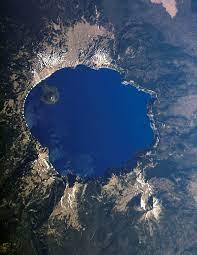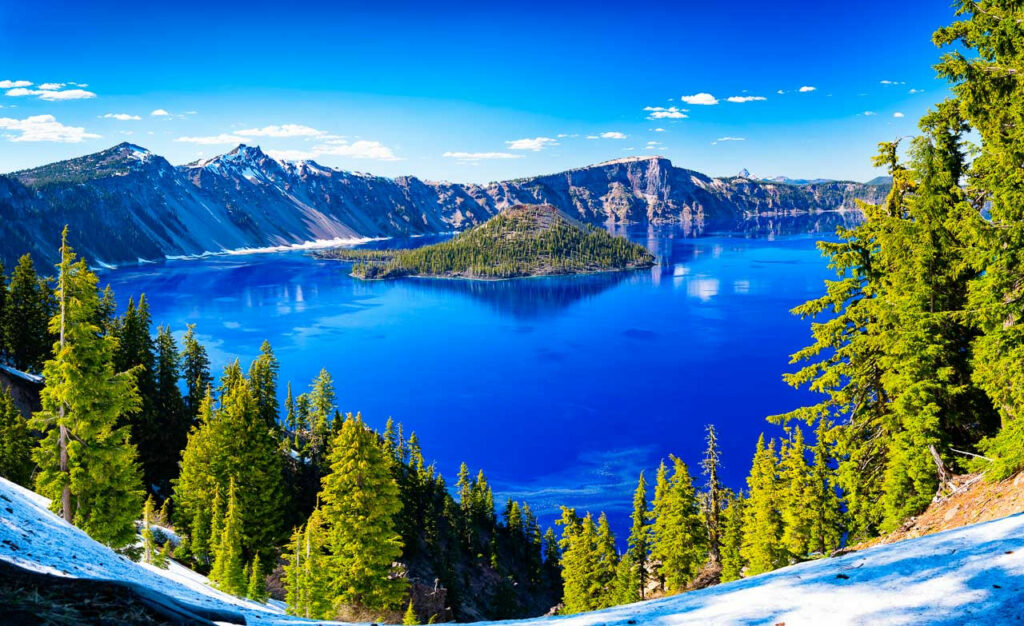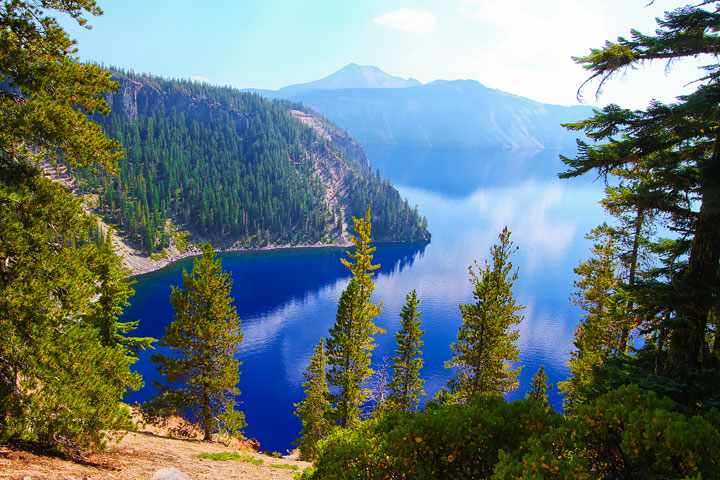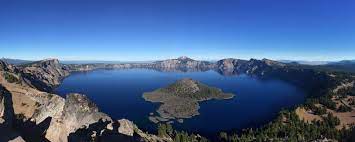Table of Contents

Oregon’s Crater Lake: An Overview
From high atop the rim of Oregon’s Crater Lake, you can see what a wonder the world really is.
A hike down to the water reveals new wonders. The water is so blue, so deep, it’s no surprise it’s the deepest lake in America, and one of the deepest on earth. That’s why it’s one of the 7 Wonders of Oregon.
Surrounded by cliffs almost 2,000 feet high and boasting a picturesque island a violent volcanic past, Oregon’s Crater Lake is also home to hikes in old-growth forest and cross-country ski trips in the winter months. Many of the roads and facilities close during the winter, but the park is open and accessible all year long.
Crater Lake is located in Southern Oregon, which is also home to the world-renowned Oregon Shakespeare Festival, the stunning Rogue River, the Oregon Caves and vineyards, chocolatiers and cheesemakers galore.
CLIMATE: Most visitors come to Oregon’s Crater Lake National Park during the months of July through mid-September, when the weather is generally mild with little precipitation. Due to the elevation of the park (6,500 ft. at Park Headquarters and 7,100 ft. at Rim Village), weather conditions may change quickly and a warm jacket and wool sweater are always recommended items to carry. During the winter months, from October through June, weather conditions make preparing for extreme winter conditions necessary. Blizzards, high winds, extreme cold and low visibility dominate the weather patterns. Visitors should come with cold weather gear.
RECREATION: A good place to begin your visit to Crater Lake is at one of the two visitor centers. The Steel Information Center lies south of Rim Drive next to park headquarters and is open year-round. In the summer, the Rim Village Visitor Center is open along Rim Drive on the southern side of the caldera. After gathering information on the park and its facilities visitors can make educated decisions about what recreation opportunities to pursue. Hiking, backpacking, camping, picnicking and sight-seeing are popular pursuits within the park. Boating and scenic driving around Rim Drive can be enjoyed by visitors during the summer months. In winter snowshoeing and cross-country skiing provide solitude and a little-known view of the park.
Crater Lake, deep, clear, intensely blue lake located within a huge volcanic caldera in the Cascade Range, southwestern Oregon, U.S., about 50 miles (80 km) northeast of Medford. The lake and its surrounding region became Crater Lake National Park in 1902, with an area of 286 square miles (741 square km). By the early 21st century the park had more than 90 miles (145 km) of hiking trails.

The crater from which the lake was formed, which is about 6 miles (10 km) in diameter, is the remnant of Mount Mazama, a volcano that rose to probably 12,000 feet (3,700 metres) until an eruption about 7,700 years ago destroyed the upper portion. Subsequent lesser outbursts are indicated by cinder cones on the caldera floor; one of these, Wizard Island, rises 764 feet (233 metres) above the water.
Crater Lake has an average surface elevation of 6,173 feet (1,881 metres) above sea level and an average depth of about 1,500 feet (457 metres). Underwater mapping of the lake in 2000 established a maximum depth of 1,943 feet (592 metres)—the previous recorded maximum had been 1,932 feet (589 metres)—making it the deepest lake in the United States and the seventh deepest in the world. Its waters are exceptionally clear, and it is often possible to see to a depth of more than 100 feet (30 metres).

Oregon’s Crater Lake: Some Facts
Crater Lake is 1,943 deep. This makes it the deepest lake in the United States, and is #9 in the world.
Crater Lake’s deep blue color is entirely natural. It is due to both the high purity and volume of the water. Pure water absorbs all colors of the spectrum except blue, which is reflected and causes it to appear blue.
Crater Lake National Park gets an extremely high amount of snowfall. The average per year is 533 inches, or around 44 feet. The record is an incredible 870 inches, or 73 feet. This huge snowfall means the park roads are only reliably fully open July through September, and sometimes even less.
Swimming in Crater Lake is only allowed from the end of the Cleetwood Cove trail, where the boat dock is. The average water temperature at lower depths is 38°F. In summer, the surface can get as high as 60°F, meaning anyone swimming generally doesn’t do it for long.
There are two species of fish in Crater Lake, Rainbow Trout and Kokanee Salmon. They are, of course, not native to the lake and were introduced by man. The park encourages fishing, in the hopes of someday removing the fish and restoring the natural ecosystem.
To Learn More about Crater Lake National Park, Follow this Link…
Crater Lake National Park (nationalparks.org)
To Return to Our Main America the Beautiful Website, Follow This Link…
America The Beautiful, July 31st – (americathebeautifulday.net)


